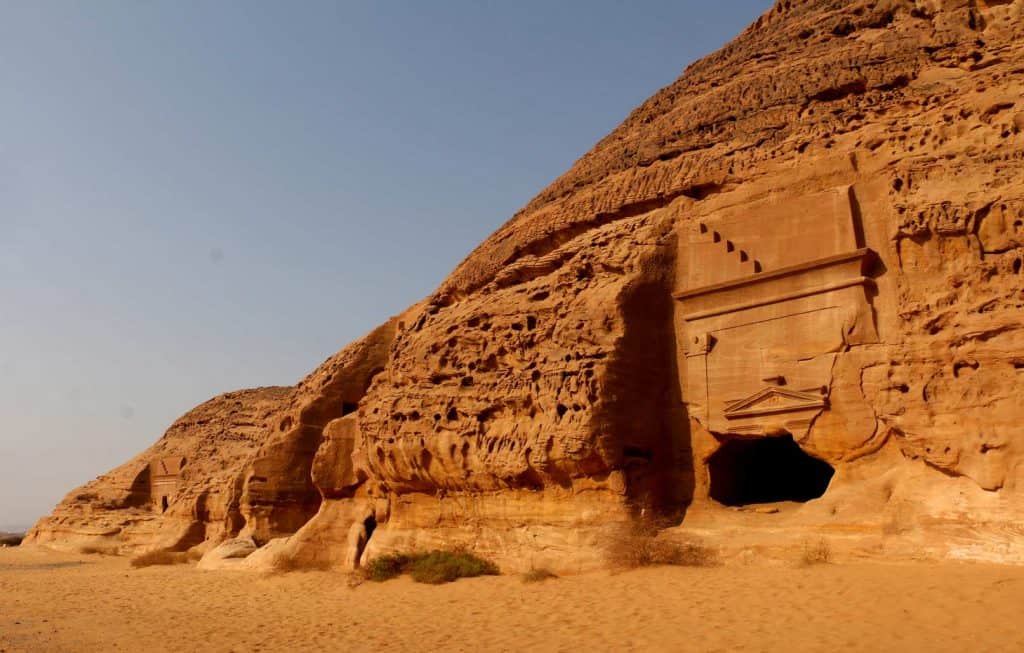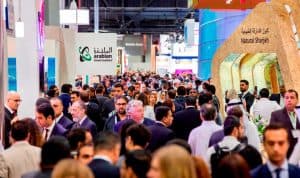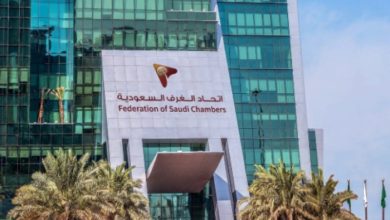
The Arabian Travel Market (ATM) which takes place this year at the Dubai World Trade Centre over four days from April 22-25 is considered by industry professionals to be the barometer for the Middle East and North Africa travel industry. Last year’s event featured 2,661 exhibitors, over 39,000 visitors and business deals reportedly worth more than $2.5 billion. LEADERS looks at what to expect at this year’s ATM and some of the most important trends likely to impact the GCC travel market over the next several years.
Global travel trends to impact the region
Celebrating its 25th year, ATM 2018 will look back over the last 25 years and discuss how the hospitality industry in the Middle East and North Africa will develop over the next 25. A panel discussion chaired by Content Inc. director, Gemma Greenwood, will explore high-tech hospitality, new hotel concepts and the brands and hotels due to arrive in the region. Eight major global trends are expected to play out in the regional market. These are fresh and communal themed hotel design; destination experiences; personalized loyalty benefits; “co-everything” shared spaces; multi-role jobs for hotel associates empowered by technology; authentic experiences; data and smart hotels. Driving evolution across operations, responsibilities will merge as associates shift from micro-tasking to multi-tasking, transitioning to multi-function roles, enabled by technology. As data applications advance, the traditional “yield manager” could be replaced by data scientists, who mine and analyze data on consumer behavior. Other major predictions include authentic over obvious luxury, adopting a genuine and more personalized style, and in-room destination guides offering curated and branded experiences. The introduction of personalized benefits through hotel loyalty schemes will see hotels offering bespoke and personalized benefits, based on customer buying behavior.
High growth for Saudi Arabia
According to Colliers International, ATM’s research partner, recent reforms in Saudi Arabia and increased investment in the kingdom’s tourism industry will drive growth in the hospitality market at a compound annual growth rate (CAGR) of 13.5%, higher than established markets such as the UAE (10.1%) and Oman (11.8%). Commenting on the findings of the report, Simon Press, ATM’s Senior Exhibition Director, says “Following recent reforms and the relaxation of visa regulations, Saudi Arabia is poised to capitalise on these factors as it nurtures a vibrant leisure and entertainment sector, supported by a new generation of hotels.”
The Saudi hotel market is currently driven by business travellers especially in the capital Riyadh. Other kinds of travellers such as pilgrims and tourists account for only 12% of demand. One of the aims of Saudi Vision 2030 is to focus more on religious tourism increasing the number of pilgrims visiting Mecca and Medina each year to more than 30 million. To this end, the kingdom’s sovereign wealth fund, the Public Investment Fund (PIF), announced in September 2017 that it was forming two new real estate development firms aimed at boosting the capacity of Mecca and Medina to receive pilgrims. The first phase of the development of an area near the Grand Mosque in Mecca will cover 854,000 square meters, deliver 115 buildings, 70,000 new hotel rooms and 9,000 housing units. Construction will start this year with the first phase expected to launch in 2024. In Medina, PIF will develop 1.3 million square meters near the Prophet’s Mosque, adding 500 housing units and 80,000 hotel rooms. Construction will also start this year with the first phase of the project due to launch in 2023.
In terms of domestic tourism, PIF announced in July 2017 that it will head up a consortium of some of the world’s leading firms to develop an international tourist destination over 34,000 square kilometers of land overlooking the Red Sea. The resort itself will be built across a lagoon of fifty untouched natural islands located between the cities of Umluj and Al Wajh, just a few kilometers from one of the kingdom’s most diverse nature reserves at Harrat Al-Rahat at the foothills of a dormant volcano. Also nearby are the ancient ruins at Mada’in Saleh, a UNESCO World Heritage site, renowned for both its beauty and historical significance. The kingdom currently has four historical sites on the UNESCO list and another ten sites have reportedly been submitted for consideration.

To support the growth of domestic tourism, PIF announced in July 2017 that it was establishing a new company to expand the scope and variety of entertainment offerings in the kingdom. The company will have an initial capitalization of $2.7 billion and will seek to attract strategic partners Projects under study include a Six Flags theme park in Riyadh
As a result of these and other developments Saudi Arabia is expected to see a vast expansion of its hotel and resort inventory, along with a steep increase in airport passengers. The Colliers report forecasts that five-year air passenger numbers will increase 8% at King Khalid International Airport in Riyadh and 6% at King Abdulaziz International Airport at Jeddah. “These higher visitor arrivals will support jobs, investment opportunities and economic diversification, in line with the kingdom’s plans for its future” says Simon Press. “In terms of regional tourism, these are game changing developments, completely unprecedented, and something few expected.”
Looking to China
 Another report by Colliers released ahead of ATM 2018 predicts the number of Chinese arrivals to the GCC in 2018 will reach 2.5 million – an increase of 21% on 2016. The report predicts Saudi Arabia will experience the highest proportionate increase of arrivals from China, up 35% on 2016. Every year, almost 15,000 Chinese pilgrims visit the two holy cities of Mecca and Medina, and that number is expected to increase as China’s Muslim population grows to 2.1% of the total population by 2030. Aimed at strengthening the ties with China Saudi Arabia has loaned Arab artefacts from the pre-historic, pre-Islamic and Islamic periods to Chinese museums, further enhancing Chinese awareness of Arab culture.
Another report by Colliers released ahead of ATM 2018 predicts the number of Chinese arrivals to the GCC in 2018 will reach 2.5 million – an increase of 21% on 2016. The report predicts Saudi Arabia will experience the highest proportionate increase of arrivals from China, up 35% on 2016. Every year, almost 15,000 Chinese pilgrims visit the two holy cities of Mecca and Medina, and that number is expected to increase as China’s Muslim population grows to 2.1% of the total population by 2030. Aimed at strengthening the ties with China Saudi Arabia has loaned Arab artefacts from the pre-historic, pre-Islamic and Islamic periods to Chinese museums, further enhancing Chinese awareness of Arab culture.
Collectively, GCC countries attract 1.9% of China’s total outbound market. However, positive trends are expected to continue as 154 million Chinese tourists prepare to go abroad in 2018 and a predicted 244 million follow in 2022. Figures from ATM 2017 show the number of delegates, exhibitors and attendees interested in doing business with China increased 63% on the previous year, with the number of delegates arriving from China up 28%. Commenting on this trend, Simon Press says “The outbound Chinese market represents a vast, untapped pool of affluent and adventurous travellers and the GCC has been a destination of choice for years. Owing to its many business opportunities and a new generation of leisure attractions, figures show the GCC is poised to further capitalise on these trends over the coming years as millions of Chinese make their first international trip.”
The Colliers data follows four years of steady growth in Chinese arrivals to the GCC, spurred by the business, leisure and religious tourism sectors. Chinese travellers today seek unexplored cities and cultures, with GCC governments courting them through roadshows, exhibitions and cultural exchanges. Further supporting this drive, over recent years, regional brands including airlines, hotels and tourism bodies have opened representative offices across China. Travel brands across the industry are working to maximise links with China, from introducing Chinese language television and menus, to hiring native Mandarin speakers. In 2016 Emirates airlines added two new routes to China – Yinchuan and Zhengzhou – in addition to regular flights to Beijing, Shanghai and Guangzhou. In 2017 Etihad airlines pioneered a code share agreement with China Southern Airlines with a reciprocal loyalty programme due over the coming months. Later in the year, the airline revealed branded livery to tie in with China’s 11.11 Global Shopping Festival and announced a points conversion scheme for flyers who shop with e-commerce giant Alibaba.
The 2018 ATM exhibition will host a discussion in the Showcase Theatre exploring the opportunities surrounding China’s 500 million millennials, with a presentation hosted by Chloé Reuter, an expert in the Chinese luxury market and founder of Reuter Communications. On day two of the exhibition the Travel Tech Theatre will host the panel discussion “What Middle East Businesses can do to capture the attention (and wallets) of Chinese luxury travelers”. The panel will be chaired by Chloe Reuter and will consist of representatives from Dubai Tourism, Tencent’s WeChat and Emaar Hospitality. Chinese exhibitors at ATM 2018 will include Guizhou Province and Fuijan Province,Zumata, XML Holiday, DidaTravel, Toursworld, DLC and Bonotel Exclusive
A 38% increase in visitors from Russia
 According to Colliers, the number of Russian visitors to the GCC in 2020 is expected to be 38% higher than the arrival figures recorded for 2016. Russia has always been well represented at ATM, with exhibitors including Moscow City Government, the National Tourist Union and the city of St Petersburg. Russian visitors to the exhibition increased 17% year on year between 2016 and 2017 and 9.4% of total visitors last year were interested in doing business with Russia. “Traditionally, the GCC has always been popular with Russian tourists” says Simon Press “but over recent years, we have witnessed some fluctuations in their arrival rates across the GCC, which was a reflection of volatility in the financial and energy markets. As those factors begin to steady, we are seeing more and more Russian visitors arrive and we expect this to continue.” Russia’s links with the GCC strengthened in 2017 with the introduction of additional airline routes, visas on arrival in the UAE for Russians, a new generation of leisure attractions, retail destinations and a broad range of hotels and resorts across the GCC region.
According to Colliers, the number of Russian visitors to the GCC in 2020 is expected to be 38% higher than the arrival figures recorded for 2016. Russia has always been well represented at ATM, with exhibitors including Moscow City Government, the National Tourist Union and the city of St Petersburg. Russian visitors to the exhibition increased 17% year on year between 2016 and 2017 and 9.4% of total visitors last year were interested in doing business with Russia. “Traditionally, the GCC has always been popular with Russian tourists” says Simon Press “but over recent years, we have witnessed some fluctuations in their arrival rates across the GCC, which was a reflection of volatility in the financial and energy markets. As those factors begin to steady, we are seeing more and more Russian visitors arrive and we expect this to continue.” Russia’s links with the GCC strengthened in 2017 with the introduction of additional airline routes, visas on arrival in the UAE for Russians, a new generation of leisure attractions, retail destinations and a broad range of hotels and resorts across the GCC region.
While the UAE is expected to continue to account for the majority of Russian arrivals, says the Colliers report, Oman will experience the highest compound annual growth rate (CAGR), at 9.2%. Both countries eased visa requirements for Russian nationals in 2017. Already feeling the benefits, in the first three quarters of 2017, Dubai reported a 98% year-on-year increase in the number of Russian arrivals, and the country is one of the emirate’s top 10 source markets. Further supporting the demand, flydubai twice extended its Russian network in 2017, adding flights to Makhachkala, Voronezh and Ufa, and daily flights to a second airport in Moscow – Sheremetyevo International. With equal appeal to business visitors, Dubai was named the most popular Russian real estate investment destination in 2016, driven by the emirate’s market supply of off-plan luxury properties. Elsewhere in the UAE, Russian hotel guest arrivals in Abu Dhabi increased 41% in the first quarter of 2017. Ras Al Khaimah recorded a 10% year-on-year increase in international arrivals in the first half of 2017. In terms of outbound tourism the Colliers research forecast UAE visitors to Russia will increase by 15% in 2018, compared to 2016, as Russia hosts the World Cup
Nine million arrivals from India by 2021
 Reports from UNWTO suggest the outbound Indian travel market will grow to 50 million by 2021, with the average spend per trip by Indian travelers also increasing. UNWTO statistics reveal India is among the top 12 source markets globally and that visitor spend reached $23.1 billion in 2016, up 15.1% year-on-year. According to Colliers, around nine million Indians are expected to travel to the GCC by 2021 representing a CAGR of 7% to 8%. India continues to head Dubai’s list of source markets for inbound tourism, with 1,478,000 Indian tourists arriving in the city between January and September 2017, a 20% increase over the same period in 2016.
Reports from UNWTO suggest the outbound Indian travel market will grow to 50 million by 2021, with the average spend per trip by Indian travelers also increasing. UNWTO statistics reveal India is among the top 12 source markets globally and that visitor spend reached $23.1 billion in 2016, up 15.1% year-on-year. According to Colliers, around nine million Indians are expected to travel to the GCC by 2021 representing a CAGR of 7% to 8%. India continues to head Dubai’s list of source markets for inbound tourism, with 1,478,000 Indian tourists arriving in the city between January and September 2017, a 20% increase over the same period in 2016.
Indian millennial tourists opt for a “little and often” approach when it comes to travel. A recent survey, by Indian online travel portal, Yatra.com, revealed that out of 1,592 respondents, 66% said they would only be planning to travel for just seven days or less at a time but they would travel more frequently. 43% of those surveyed were millennials. The survey also revealed that, while some were prepared to spend over AED 2,845 ($800) on a single trip, the preferred choice of accommodation was budget hotels “There are more than 400 million millennials in India” says Simon Press “In terms of short break deals and offers this is sure to alert travel professionals and hoteliers throughout the GCC, being in such close proximity to their Indian neighbor. The travel time from Mumbai to Dubai, in particular, is just over three hours, and from Mumbai to Muscat, just under three hours, putting both cities on the radar as prime short break destinations.”
The United Kingdom is still popular with GCC travelers
 Colliers reports that 659,466 GCC nationals visited the UK in 2016, an increase of 6.6% on the previous year. These included over 350,000 visitors from the UAE; more than 150,000 from KSA; over 100,000 from Kuwait and just under 50,000 from Bahrain. According to Simon Press, the average spend per trip ranges from $1,150 to $3,153. London continues to be the most popular destination in the UK, recording almost 3.5 million room nights, compared to 3.9 million for the rest of England, 321,000 in Scotland, 215,000 in Wales, and almost 12,500 in Northern Ireland, in 2016. Keen to build on this growth, UK exhibitors already signed up for ATM 2018 include current English Premier League champions Chelsea FC; AC Group, a leading supplier to the travel trade; the five-star family-run Arch Hotel in London; top children’s attraction, Kidzania; Royal Botanic Gardens Kew, the international botanical research and education institute; the national tourist board, VisitBritain; and luxury hotel operator, Macdonald Hotels and Resorts.
Colliers reports that 659,466 GCC nationals visited the UK in 2016, an increase of 6.6% on the previous year. These included over 350,000 visitors from the UAE; more than 150,000 from KSA; over 100,000 from Kuwait and just under 50,000 from Bahrain. According to Simon Press, the average spend per trip ranges from $1,150 to $3,153. London continues to be the most popular destination in the UK, recording almost 3.5 million room nights, compared to 3.9 million for the rest of England, 321,000 in Scotland, 215,000 in Wales, and almost 12,500 in Northern Ireland, in 2016. Keen to build on this growth, UK exhibitors already signed up for ATM 2018 include current English Premier League champions Chelsea FC; AC Group, a leading supplier to the travel trade; the five-star family-run Arch Hotel in London; top children’s attraction, Kidzania; Royal Botanic Gardens Kew, the international botanical research and education institute; the national tourist board, VisitBritain; and luxury hotel operator, Macdonald Hotels and Resorts.
Flying high
Aviation will feature heavily in the program at ATM 2018, The sessions will be moderated by Alan Peaford, a former national newspaper journalist and current president of the UK’s Institute of Internal Communications. Peaford edited Flight International’s Flight Daily News for 17 years and has won an Aerospace Journalist of the Year award on five occasions. “Aviation and aerospace is thriving despite lower oil prices” says Peaford. “Even with regional uncertainties, aviation continues to grow”. According to the International Air Transport Association (IATA) Middle East passenger numbers are forecast to grow by 7% in 2018 while Middle East airlines will see net profits doubling to $600 million







